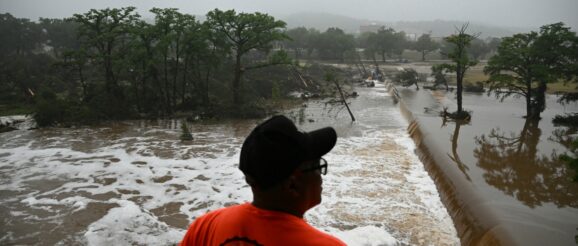A timeline of the catastrophic Texas floods

In the early hours of Friday, floods swept across Texas Hill Country. The Guadalupe River rose 26 feet within 45 minutes, according to state officials.
The flooding killed at least 14 children and 18 adults, officials said at a press conference on Saturday afternoon. Frantic search efforts continue for 27 girls from a local Christian summer camp — Camp Mystic — who remain missing, as well as other missing individuals. Officials added that more than 850 people have been rescued, including over 100 airlifted from the region.
On Friday, when asked why the summer camps in the area were not evacuated, Kerr County Judge Rob Kelly, the county’s top elected official, said, “I can’t answer that. I don’t know.”
On Wednesday the Texas Division of Emergency Management (TDEM) activated state emergency response resources, saying there were “increased threats of flooding in parts of West and Central Texas.” Swift water rescue teams, along with other types of rescue equipment, were moved to the area because some modeling predicted high levels of rainfall.
“But listen, everybody got the forecast from the National Weather Service….It did not predict the amount of rain that we saw,” said Texas Emergency Management Chief Nim Kidd on Friday.
U.S. Rep. Chip Roy, R-Texas, who was in the area for the July 4th celebrations, asked for people to focus on the ongoing rescue work. “I’d just [ask] everybody like, pause, take a breath for the recriminations and the Monday morning quarterbacking,” he said on Saturday. “Let’s focus on finding those who can be found, then we can always assess what we need to do later, going forward.”

Kristi Noem, secretary of Homeland Security, said on Saturday afternoon, “for decades, for years, everybody knows that the weather is extremely difficult to predict.”
“I do carry your concerns back to the federal government, to President Trump and and we will do all we can to fix those kinds of things that that may have felt like a failure to you and to your community members,” she said, adding that Trump is “working to upgrade the technologies that have been neglected.” Some have raised questions about whether cuts to the National Weather Service and other federal emergency management agencies impacted the ability to provide accurate weather warnings.
The Texas Division of Emergency Management (TDEM) announced that it was activating state emergency response resources because of the threat of flooding.
At some point in the morning, Lt. Gov. Dan Patrick later said at a press conference, the TDEM Region 6 Assistance Chief had “personally contacted the judges and mayors in that area and notified them all of potential flooding.” He said it was unclear exactly where in the region the storm would hit.
“The message was sent,” Patrick said, “It is up to the local counties and mayors under the law to evacuate, if they feel a need. That information was passed along.”

Between 4 a.m. and 6 a.m., the Guadalupe River surged, with water levels rapidly rising as much as 30 feet, according to Rep. Roy. Local TV footage showed the empty foundations of houses, where everything else had been swept away.
Kerrville City Manager Rice said he started getting calls around 5 a.m. about the flooding. He said upstream of the city two branches converge into the Guadalupe River and that both forks had received more rain than expected. “It was about seven feet or so on the south fork, and within a matter of minutes, it was up to 29 feet,” Rice recounted later on Friday.
After the 1987 flood, alarms were installed along the river. However, Rice said that he believes those are south of Kerrville. “There [are] not alarms everywhere on the river,” he said.
He added that it is a very hard decision when to issue evacuation orders. “There’s a balance between do you evacuate and put chaos on the road and potentially risk people getting stuck on a road? This is hill country…There’s a lot of low water crossings,” he said. “A lot of our operations plans — especially with these camps, that is — the plan is sometimes shelter in place to get them to those known high grounds and then wait for rescue.”
Kidd — the Texas Emergency Management Chief — said the boats and other equipment that was pre-positioned started responding immediately, although he did not specify at what time. “Those were put immediately into use as soon as the rain fell and the 911 calls started coming in. They were already here,” he said.
Speaking on Friday, Lt. Gov. Patrick said there were 14 helicopters, 12 drones, nine rescue teams as well as “swimmers in the water rescuing adults and children out of trees.” He said there were 400 to 500 people on the ground helping with the rescue effort.
Search and rescue operations continued through the night, according to Kerrville City Manager Rice, who said the teams were relying a lot on helicopters and using specialized equipment that detect heat sources to help find stranded people.
At around 8 a.m. on Saturday, Rice said “boots on the ground operations” were able to begin. The teams started southwest of Hunt, TX — southwest of Camp Mystic — and “these folks will be traveling very difficult terrain…and we’re going to start getting information,” he said at a press conference on Saturday morning.
Officials said that more than 1,000 local, state and federal personnel were on the ground helping with the rescue operation.
